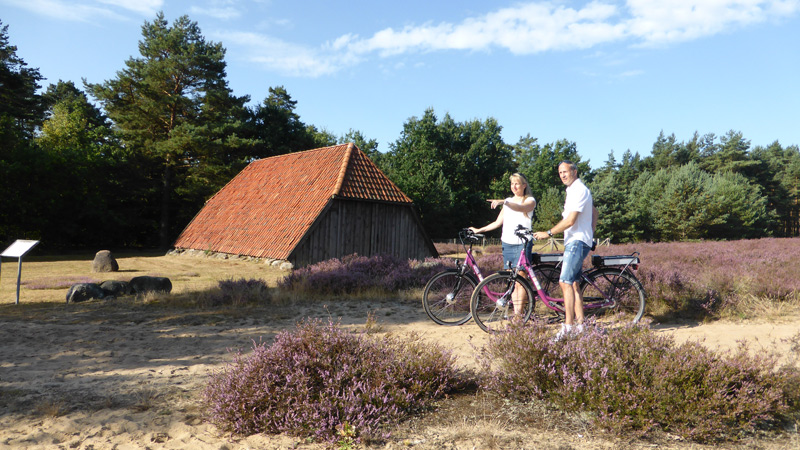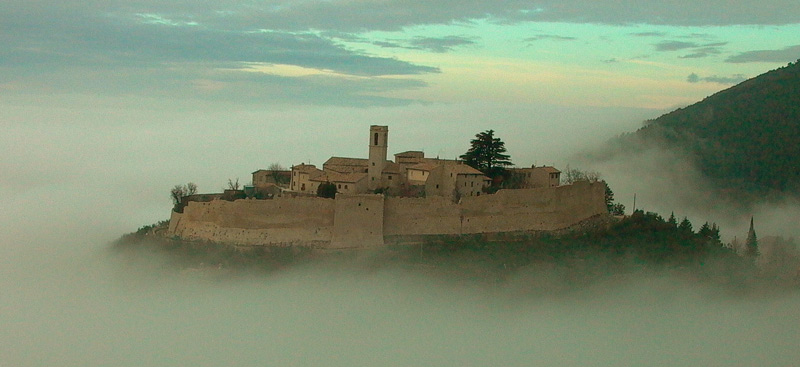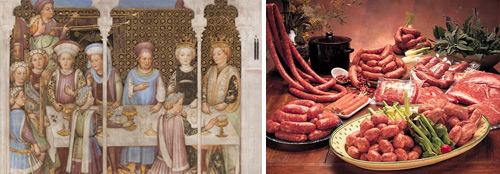Clusters
The “Tourist Clusters” (tourist attractions) are homogeneous areas as regards to history, Longobard traces and natural characteristics. These are territorial units in which, under the Longobards but also after them, further developments occurred that endowed each Cluster, and the micro-territories of the Municipalities they contain, with an identity of their own, consisting of historical and economic elements and enriched with typical endogenous resources in sectors that are interesting for tourism today (agrifood, wines and gastronomic specialities, handicrafts, hospitality, etc.)
The Clusters are homogeneous territories from the Longobard historical and cultural point of view and in each of them a specific non-reproducible local identity can be found. Thanks to Clusters, the connection between the main (archaeological) axis of the Route, its tangible and intangible elements produced in the various phases of Longobard civilisation and the various points of tourist interest (POIs) of each territory becomes easier.
Each Cluster comprises larger and smaller towns - the latter often outside the main tourism circuits, but not for that reason any less interesting - which have a common characteristic: to a various extent and in various forms, they all share the experience and historic heritage of the Longobard period. These can be recognized in each territory in different ways, just as - from a more general point of view and for objective historic reasons - there are many different types and ways of perceiving Longobard presence between the first two European macro-areas and the Italian area on the whole, where Longobard history and culture achieved the maximum level of success and maturity.
What to see

Lüneburger-Heide
In the "Lands of the Elbe" and the "Lands of the Kings", Longobard signs are collected in Museums or can be recognized in the aspect and conformation of the landscape of the settlements dating back to proto-history and to the first historic phase, no less than in the extent and impressiveness of the archaeological areas surrounded by nature. In this case the Clusters group together locations which, considering archaeological and geographical elements, have characteristics in common.
In Italy the offer for tourism is further enriched by the much more widespread and important presence, as regards both quality and quantity, of the artistic and monumental assets such as castra, castles, monasteries, sanctuaries, churches, archaeological areas, museums, historic and documentary archives and, of course, by aspects of the landscape linked to the use of the territory by the Longobards (defence points, road control points, fords, mountain passes, trade and river routes).

Campello Alta
With the creation of the various Clusters in each macro-area, the offer for cultural tourism is simplified, but at the same time it is enriched with a great variety of proposals.
The division into Clusters also offers users the chance to make more restricted and reasoned choices on which to focus their attention; however, all the options are such as to enable them to appreciate, alongside the specific Longobard theme, the other historic, artistic and environmental characteristics, as well as the typical features and excellent specialities of the various territorial groupings.
Typicality and excellence

The overall exploitation of the Route for cultural tourism also includes the simultaneous integrated exploitation of the endogenous resources of the various Clusters. These are mainly the sectors of farm food products, wines and gastronomy, wine making, beer production, handicrafts, especially of the artistic variety, hospitality services and transport.
For each of these areas of activity, the “Longobardia System” contemplates interventions to qualify the overall proposal of the various clusters, assigning to products and services the Route's territorial brand as a means of recognition and a guarantee of the quality, typical nature and authenticity of products and services. The agreement is based on the acceptance by the partners of the Rules adopted for governing the use of the Brand, and which have been conceived in order to ensure its customization for each Cluster, so as to guarantee a non reproducible identity both for each Cluster and for their productions.
The same procedure will be used to exploit the various paths, created even by third parties, that promote the knowledge and sampling of typical products (Wine roads, Oil roads, Flavour roads, Slow Food, etc.).
“Internal” micro-itineraries
Thanks to the articulation of the Longobardia System, as well as the macro-routes based on the key points of the entire “Geocultural corridor”, there are further routes – in this case also for cyclists or walkers- that can be undertaken not only in each Cluster, but even in the territory of each Municipality in the Cluster, or in fine natural areas.
The System of the Itinerary “Longobard Ways across Europe” is multi-level and multi-sectoral, because it allows everyone – following the Longobard leitmotif, choosing a theme and associating their choices with the various POI (Points of Interest) - to visit and know places, and the artistic, cultural and religious aspects, nature, wines and gastronomic products of many communities and to share common “Longobard” experiences with them.
News
-
2025 21 MarchERRATA CORRIGE CONVEGNO DONNE LONGOBARDE
-
2025 19 March
-
2025 19 MarchDa Salerno a Monza: convegni nel nome delle mulieres longobarde
